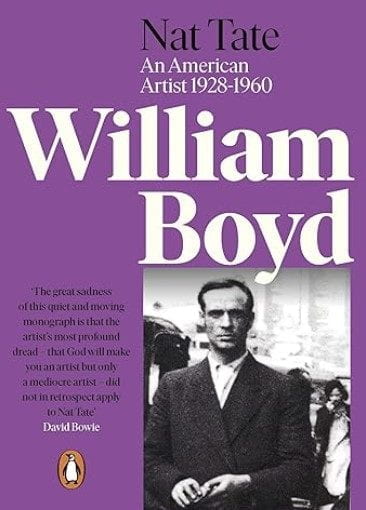You work for an art magazine and in a meeting one day, someone says why don’t we have some fiction as all of the writing is non-fiction and the response from Boyd is ‘let’s invent an artist’. Yes it’s fiction but it’s in non-fiction form and so will be no different. We have moved here from an unreliable narrator to an unreliable author and that is far more uncomfortable. Anyway, this novella is an imagined biography of an imagined artist which fooled the art world, even down to the point of selling one of the paintings from this artist which had been drawn by Boyd. The art world is full of frauds, this is just one in the written form.
If I hadn’t read about the artifice of this book, I would have believed that this artist existed because Boyd has captured the style of writing just so. His inclusion of sources such as journals from other artists as well as his lover’s journal but most of all the photographs, provide the authenticity to the book. Boyd says at the end these are photos that he collected from markets. He did insert a character from one of his previous short stories, Logan Mountstuart, but this wasn’t picked up on, dare I say because most of us haven’t read it. Nor did anyone pick up on the name of the painter and so it became a hoax that would not die. I think what really convinced people that this artist existed was the way that artists of the time were woven into the story. So integral to the ending is Georges Braque, Picasso is in there as well as others from that era. Perhaps it is FOMO when others believed Tate was a real person. Who wants to be considered ignorant about such an important artist and this is what the book plays into in the world of art.
There have been plenty of other books that are imagined biographies or even autobiographies, Biography of X by Catherine Lacey or The Stone Diaries by Carol Shields but what differs with them is that we know they are fictional as we enter them so there is no hoodwinking. So what was the point of Nat Tate?
Well, firstly I suspect, the author’s wonder/ego about whether he can pull it off. The answer is yes but Boyd does go on to say that he felt like Frankenstein because as in all of these things, he lost control of the hoax and that is when, I think, hoaxes become dangerous. The ending was ingenious and a perfect way to answer the question of why there is no art left from this person. The second purpose of this book might have been to shine a light on the world of art: how myths and stories around artists are created and how we all buy into them because we want these creatives to be different, to be better, more interesting and, therefore, how easily the world of art can be duped.
I question the motivations for writing a book like this but in truth the boundaries have blurred considerably between fiction and non-fiction nowadays in books and in real life and so this is one more in the library that resides at the lies end of the truth and lies continuum. What is true is that it is very well written.
